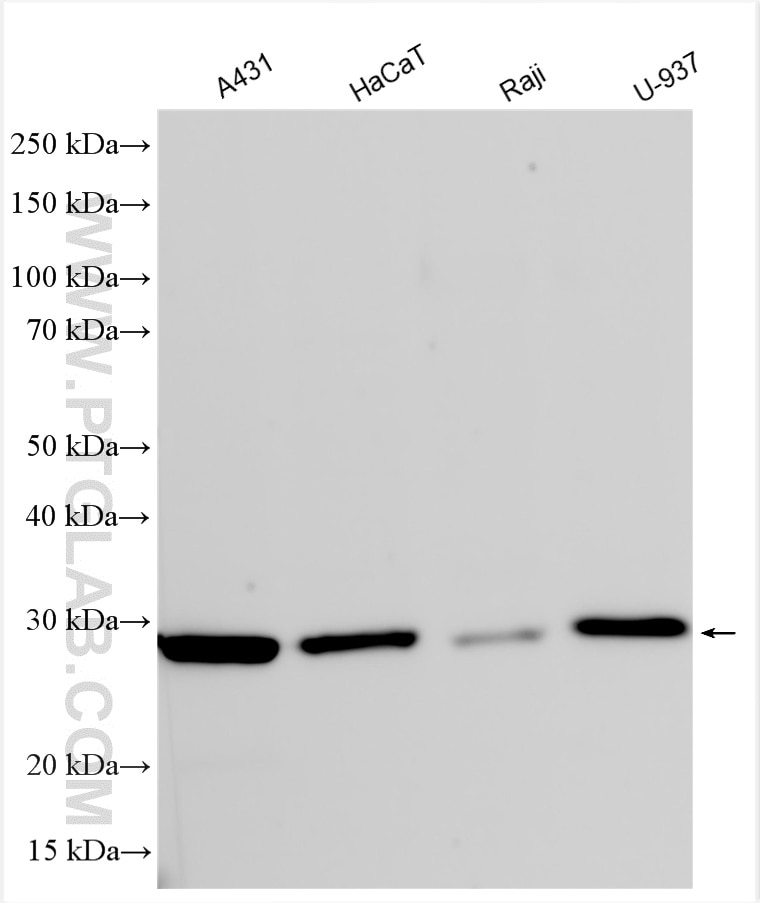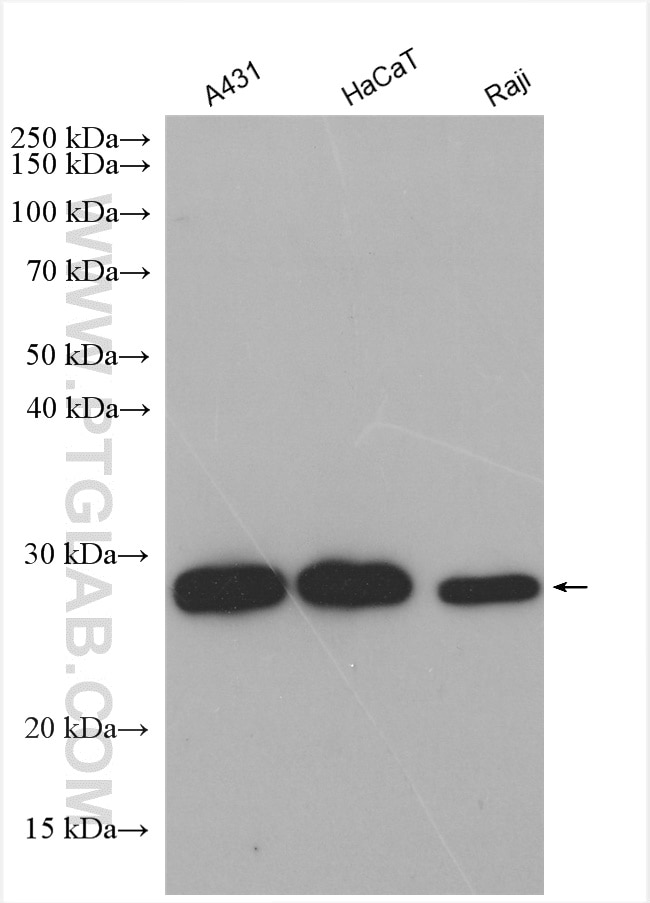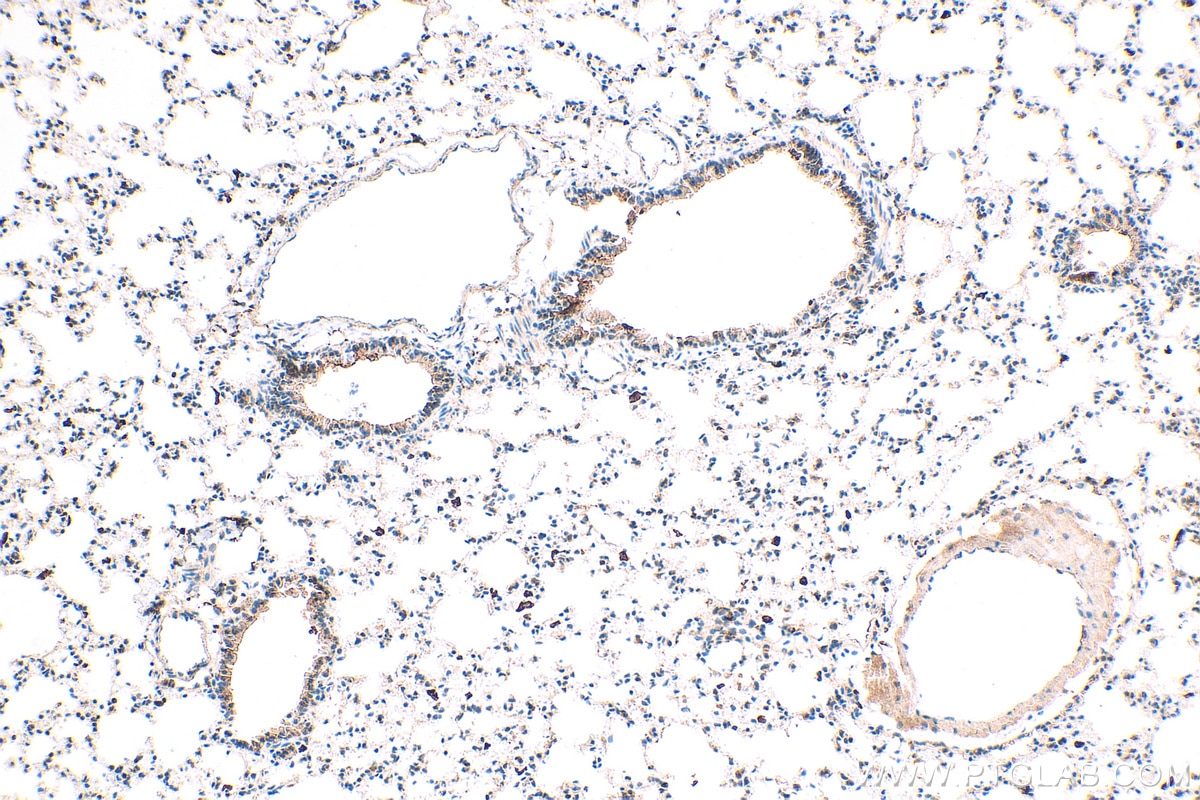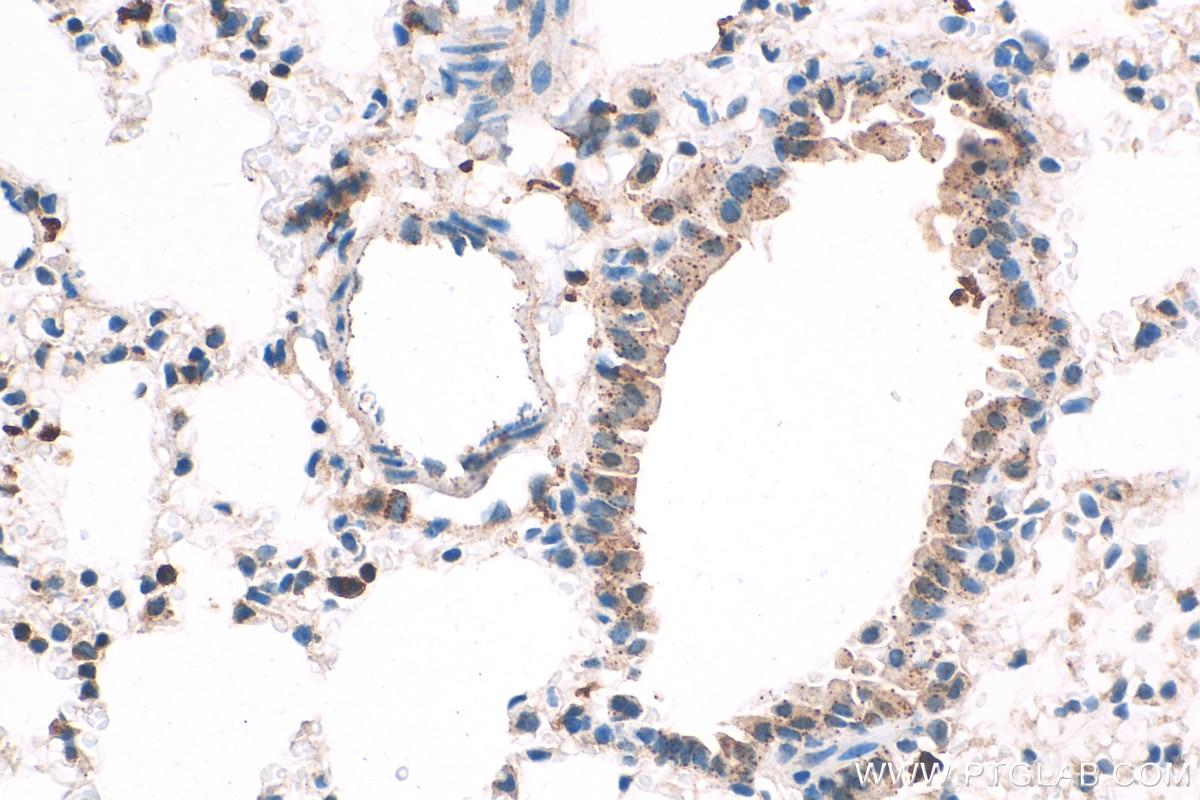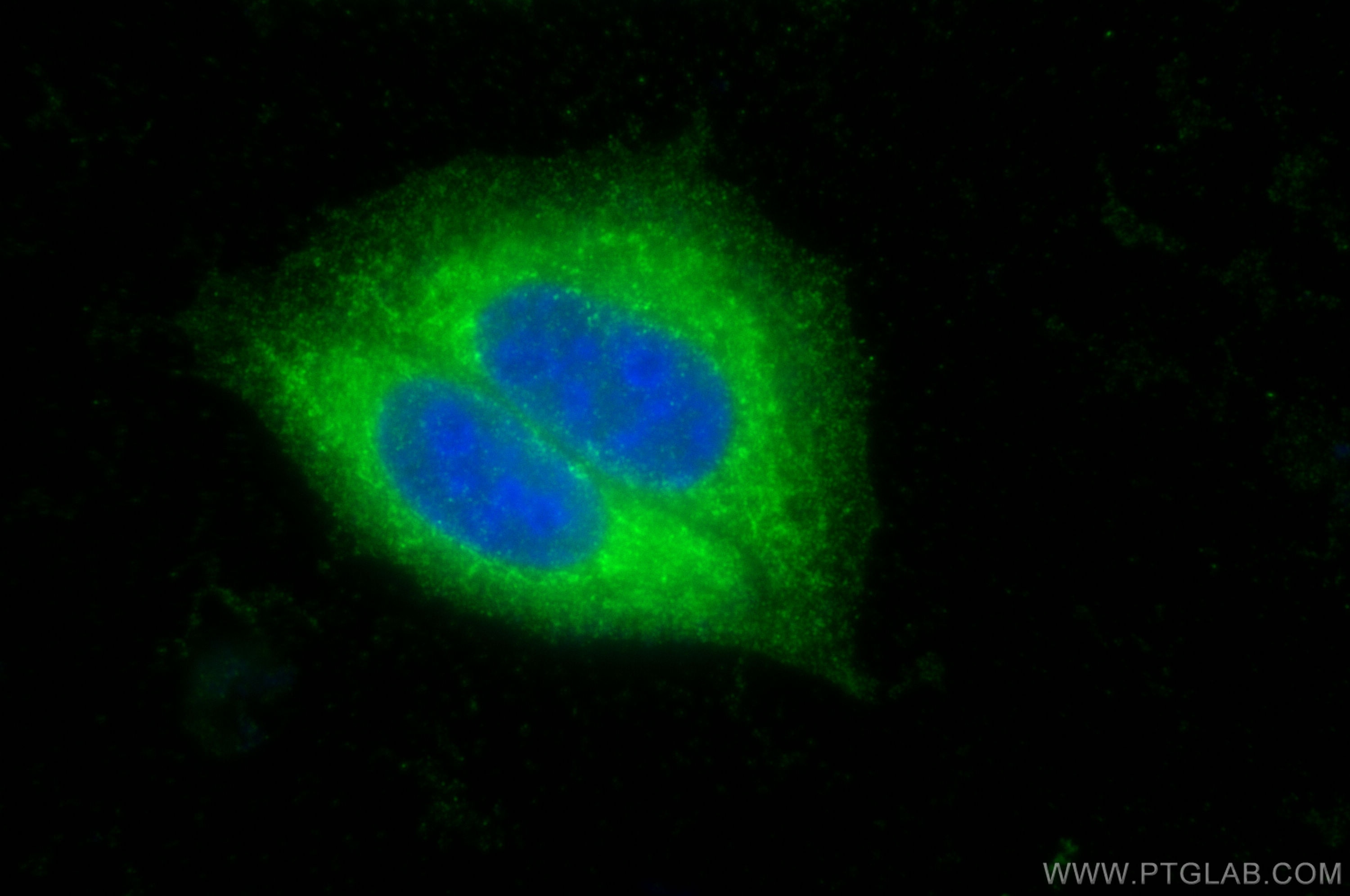Cathepsin H Polyklonaler Antikörper
Cathepsin H Polyklonal Antikörper für WB, IHC, IF/ICC, ELISA
Wirt / Isotyp
Kaninchen / IgG
Getestete Reaktivität
human, Maus, Ratte
Anwendung
WB, IHC, IF/ICC, ELISA
Konjugation
Unkonjugiert
Kat-Nr. : 10315-1-AP
Synonyme
Galerie der Validierungsdaten
Geprüfte Anwendungen
| Erfolgreiche Detektion in WB | A431-Zellen, HaCaT-Zellen, Raji-Zellen, U-937-Zellen |
| Erfolgreiche Detektion in IHC | Mauslungengewebe Hinweis: Antigendemaskierung mit TE-Puffer pH 9,0 empfohlen. (*) Wahlweise kann die Antigendemaskierung auch mit Citratpuffer pH 6,0 erfolgen. |
| Erfolgreiche Detektion in IF/ICC | HepG2-Zellen |
Empfohlene Verdünnung
| Anwendung | Verdünnung |
|---|---|
| Western Blot (WB) | WB : 1:1000-1:6000 |
| Immunhistochemie (IHC) | IHC : 1:500-1:1000 |
| Immunfluoreszenz (IF)/ICC | IF/ICC : 1:200-1:800 |
| It is recommended that this reagent should be titrated in each testing system to obtain optimal results. | |
| Sample-dependent, check data in validation data gallery | |
Veröffentlichte Anwendungen
| WB | See 1 publications below |
| IHC | See 3 publications below |
| FC | See 1 publications below |
Produktinformation
10315-1-AP bindet in WB, IHC, IF/ICC, ELISA Cathepsin H und zeigt Reaktivität mit human, Maus, Ratten
| Getestete Reaktivität | human, Maus, Ratte |
| In Publikationen genannte Reaktivität | human, Maus, Ratte |
| Wirt / Isotyp | Kaninchen / IgG |
| Klonalität | Polyklonal |
| Typ | Antikörper |
| Immunogen | Cathepsin H fusion protein Ag0361 |
| Vollständiger Name | cathepsin H |
| Berechnetes Molekulargewicht | 41 kDa, 28 kDa |
| Beobachtetes Molekulargewicht | 28, 41 kDa |
| GenBank-Zugangsnummer | BC002479 |
| Gene symbol | Cathepsin H |
| Gene ID (NCBI) | 1512 |
| Konjugation | Unkonjugiert |
| Form | Liquid |
| Reinigungsmethode | Antigen-Affinitätsreinigung |
| Lagerungspuffer | PBS mit 0.02% Natriumazid und 50% Glycerin pH 7.3. |
| Lagerungsbedingungen | Bei -20°C lagern. Nach dem Versand ein Jahr lang stabil Aliquotieren ist bei -20oC Lagerung nicht notwendig. 20ul Größen enthalten 0,1% BSA. |
Hintergrundinformationen
Cathepsin H (CTSH, synonyms: CPSB, MGC1519, minichain) is a lysosomal cysteine proteinase important in the overall degradation of lysosomal proteins. It is composed of a dimer of disulfide-linked heavy and light chains, both produced from a single protein precursor. This protein, which belongs to the peptidase C1 protein family, can act both as an aminopeptidase and as an endopeptidase. Increased expression of this gene has been correlated with malignant progression of prostate tumors.Cathepsin H is a unique member of the cysteine cathepsins that acts primarily as an aminopeptidase. Like other cysteine cathepsins, it is synthesized as an inactive precursor and activated by proteolytic removal of its propeptide. In human cells, Cathepsin H exists an autocatalytic form, proceeding from an inactive 41 kDa pro-form, through a 30 kDa intermediate form, to the 28 kDa mature form (PMID: 22704610).
Protokolle
| Produktspezifische Protokolle | |
|---|---|
| WB protocol for Cathepsin H antibody 10315-1-AP | Protokoll herunterladen |
| IHC protocol for Cathepsin H antibody 10315-1-AP | Protokoll herunterladen |
| IF protocol for Cathepsin H antibody 10315-1-AP | Protokoll herunterladen |
| Standard-Protokolle | |
|---|---|
| Klicken Sie hier, um unsere Standardprotokolle anzuzeigen |
Publikationen
| Species | Application | Title |
|---|---|---|
Cell Rep Med Distinct immune microenvironment of lung adenocarcinoma in never-smokers from smokers | ||
Oncogene Cathepsin H regulated by the thyroid hormone receptors associate with tumor invasion in human hepatoma cells. | ||
Microscopy (Oxf) Histochemical examination on principal collagen fibers in periodontal ligaments of ascorbic acid-deficient ODS-od/od rats. | ||
Front Pediatr Impaired FGF10 Signaling and Epithelial Development in Experimental Lung Hypoplasia With Esophageal Atresia. | ||
Nature Anti-tumour immunity controlled through mRNA m6A methylation and YTHDF1 in dendritic cells. |
